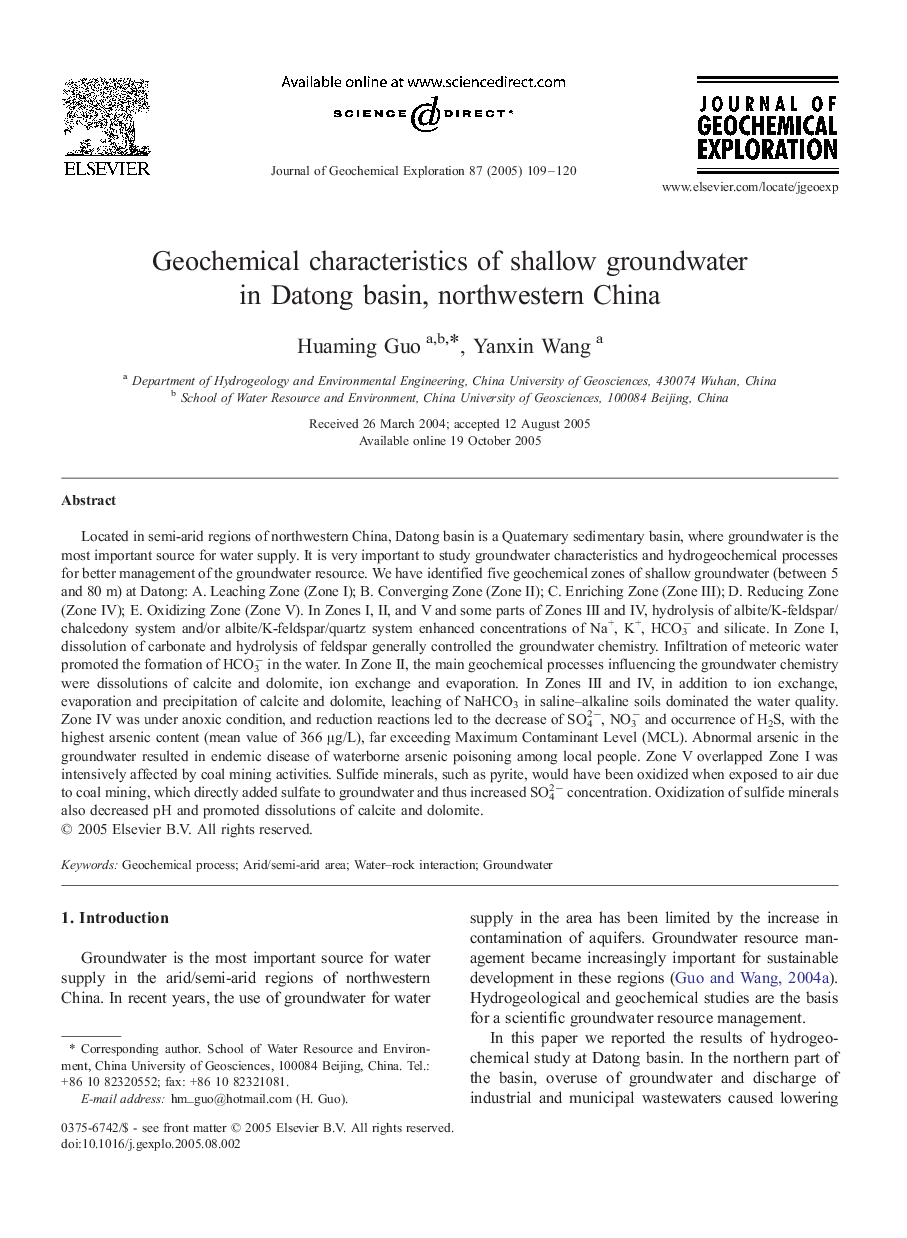| کد مقاله | کد نشریه | سال انتشار | مقاله انگلیسی | نسخه تمام متن |
|---|---|---|---|---|
| 9461125 | 1312680 | 2005 | 12 صفحه PDF | دانلود رایگان |
عنوان انگلیسی مقاله ISI
Geochemical characteristics of shallow groundwater in Datong basin, northwestern China
دانلود مقاله + سفارش ترجمه
دانلود مقاله ISI انگلیسی
رایگان برای ایرانیان
موضوعات مرتبط
مهندسی و علوم پایه
علوم زمین و سیارات
زمین شناسی اقتصادی
پیش نمایش صفحه اول مقاله

چکیده انگلیسی
Located in semi-arid regions of northwestern China, Datong basin is a Quaternary sedimentary basin, where groundwater is the most important source for water supply. It is very important to study groundwater characteristics and hydrogeochemical processes for better management of the groundwater resource. We have identified five geochemical zones of shallow groundwater (between 5 and 80 m) at Datong: A. Leaching Zone (Zone I); B. Converging Zone (Zone II); C. Enriching Zone (Zone III); D. Reducing Zone (Zone IV); E. Oxidizing Zone (Zone V). In Zones I, II, and V and some parts of Zones III and IV, hydrolysis of albite/K-feldspar/chalcedony system and/or albite/K-feldspar/quartz system enhanced concentrations of Na+, K+, HCO3â and silicate. In Zone I, dissolution of carbonate and hydrolysis of feldspar generally controlled the groundwater chemistry. Infiltration of meteoric water promoted the formation of HCO3â in the water. In Zone II, the main geochemical processes influencing the groundwater chemistry were dissolutions of calcite and dolomite, ion exchange and evaporation. In Zones III and IV, in addition to ion exchange, evaporation and precipitation of calcite and dolomite, leaching of NaHCO3 in saline-alkaline soils dominated the water quality. Zone IV was under anoxic condition, and reduction reactions led to the decrease of SO42â, NO3â and occurrence of H2S, with the highest arsenic content (mean value of 366 μg/L), far exceeding Maximum Contaminant Level (MCL). Abnormal arsenic in the groundwater resulted in endemic disease of waterborne arsenic poisoning among local people. Zone V overlapped Zone I was intensively affected by coal mining activities. Sulfide minerals, such as pyrite, would have been oxidized when exposed to air due to coal mining, which directly added sulfate to groundwater and thus increased SO42â concentration. Oxidization of sulfide minerals also decreased pH and promoted dissolutions of calcite and dolomite.
ناشر
Database: Elsevier - ScienceDirect (ساینس دایرکت)
Journal: Journal of Geochemical Exploration - Volume 87, Issue 3, December 2005, Pages 109-120
Journal: Journal of Geochemical Exploration - Volume 87, Issue 3, December 2005, Pages 109-120
نویسندگان
Huaming Guo, Yanxin Wang,